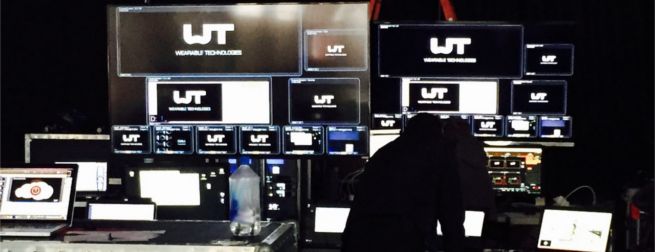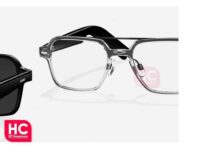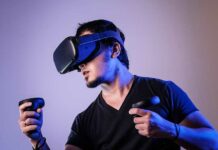The goal of wearable technology is to become ubiquitous and invisible to the eyes. However we have seen how the smart phone has altered our perception of human interactions, and decreased the ability for people to have mature dialogue. With these two ideas in mind, WT | Wearable Technologies is curious what engineers are creating to resolve this evolving social issue. There are not many devices available for purchases that utilize alternative screen methods. Yet, we were able to find 3 amazing projects.
Cicret – The Bracelet with pico projection located directly on your wrist. For those that have never heard, pico projectors are hand-held projectors for portable devices. The idea surrounding the bracelet is that it connects to your smart phone so you can manipulate it on your wrist. This allows for waterproof, real-time hands-free communication. You can read and reply to emails, SMS, social media post, as well as be given directions at the base of your palm! Talk about a modern design for the ‘palm pilot.’
MadLab creates tool for the future. They focus on HCI they desired to create an interactive, enjoyable, and fun method for producing customized ready-to-wear forms. Tactum is their recent project on skin-centric designs. Tactum is an augmented modeling tool that lets you design 3D printed wearables directly on your body. The tool is quite ingenious. The user can simply touch, poke, rub, or pinch the geometry from the projection onto their arm to customize ready-to-print forms. The possibilities are endless; thus making Tactum a creative tool for designers.
Meta has taken an augmented reality headset with interactive 3D holograms. Now you can play games with friends inside a holographic augmented space, or you can design real-time ready-to-print 3D products. The headset features gesture recognition, surface/head tracking, microphone, HD camera and true to scale holograms. The headset is sold as a Meta 1 Developers Kit built with Unity for $667. They’ve also recently released designs for a sleeker and less obtrusive AR space glasses; thus altering their current product to be smaller and form fitting to the face.
Microsoft HoloLens has teamed up with NASA for a project called Sidekick. The goal is to provide virtual aid to astronauts! This could reduce the crew training requirements and increase the efficiency that people can work in space. The twitter picture below is from NASA and Microsoft testing the HoloLens in NASA’s Weightless Wonder C9 jet; thus ensuring that the VR glasses will work with no gravity. There are two modes of operation; Remote Expert Mode, and Procedure Mode. The first uses Skype to allow the ground operator to see what the crew member sees. The second augments the task at hand by providing animated holographic illustrations on top of object the crew is interacting with. Microsoft’s partnership with NASA has long-time plans of improving HCI within space exploration. They have also created a software called OnSight that helps scientist on Earth work virtually on Mars.
We’re teaming up with @NASA to empower astronauts aboard the @Space_Station: http://t.co/R5ZLMCFnfK #HoloLens pic.twitter.com/B6mom9qQEq
— Microsoft HoloLens (@HoloLens) 25. Juni 2015
Wow! We traveled from waterproof pico projections on your wrist to projects enabling universal exploration. The possibilities of using wearable technology are limitless. The everlasting goal is to be able to survive in any environmental condition with the assistance of technology. Tech engineers and designers, as well as every day users can be conditioned to use technology in the appropriate ways. In hopes of diminishing the negative side of technology; which is isolation, cybercrime/bullying, and the ever loaming glow of the screen.
















